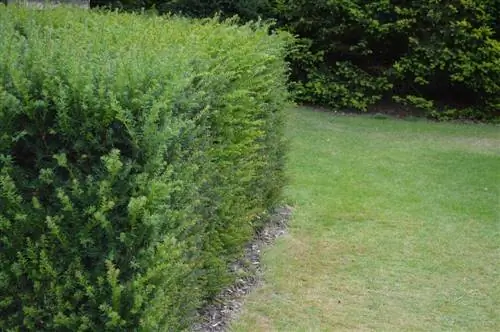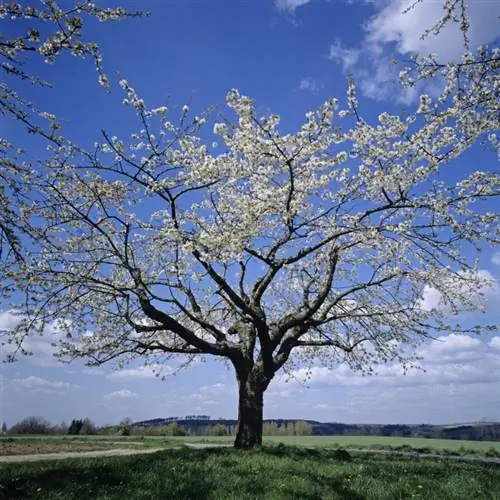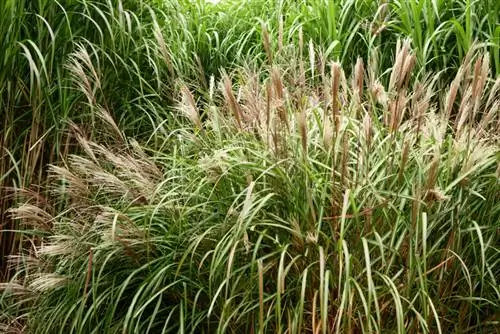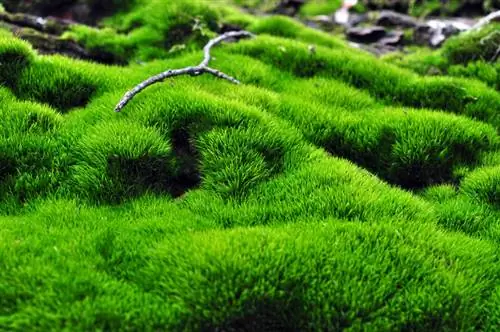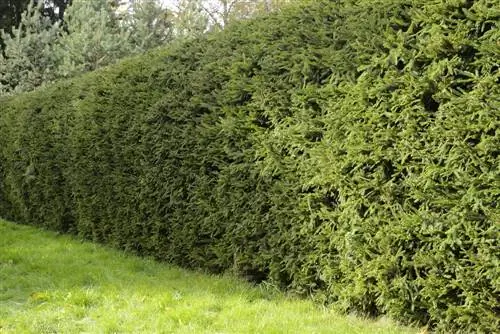- Author admin [email protected].
- Public 2023-12-16 16:46.
- Last modified 2025-01-23 11:22.
The European yew (Taxus baccata) and the hybrid yew (Taxus media) are often used for hedge planting because of their advantages. But does the attractive coniferous tree also have disadvantages? And how can these be reduced?
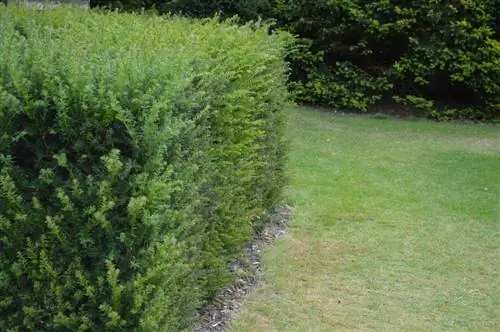
What are the advantages and disadvantages of yew hedges?
Yew hedges offer advantages such as evergreen, easy care, shade tolerance, pruning tolerance, longevity and robustness. The disadvantages are the slow growth and the high toxicity of all parts of the plant for humans and animals.
What are the advantages of a yew hedge?
Yews are popular hedge plants because they
- evergreen
- very easy to care for
- shade tolerant
- very cut-friendly
- durable
- and robust
are. If cut regularly, the coniferous tree develops a very dense growth and after a few years creates an excellent privacy screen that is completely opaque. The conifer is also one of the trees that can be planted in the shade without worry.
Furthermore, yew trees can be pruned as desired and can even tolerate radical pruning - the tree simply keeps sprouting again and again. The dark green shiny needles and the bright red berries in autumn also make the hedge visually very attractive.
Where are yews particularly suitable for a hedge?
In principle, you can plant yew trees anywhere in the garden and they will feel comfortable there. Whether in full sun or deep shade, on sandy or loamy soil: the yew is an undemanding plant and can grow almost anywhere. The plant cannot tolerate waterlogged, very dry or very acidic soils.
However, the yew feels particularly comfortable in a place that
- Partly shaded to shady
- slightly moist, but not waterlogged
- has loose and nutrient-rich soil
- and has a neutral pH value
What disadvantages does the yew tree have as a hedge?
Yew trees can live up to 1000 years old (and more!) because they grow extremely slowly and can also regenerate again and again. However, this also means that the conifers only grow very slowly. With a maximum annual growth of 20 to 30 centimeters, you will have to wait many years until the yew hedge has grown tall and dense.
In addition, all parts of the plant are highly toxic to humans and animals. A few berries are enough to fatally poison a child or pet. The bright red fruits in particular are great for snacking on and should therefore be kept away from curious kids.
Are there also non-poisonous yew trees?
All yew trees and commercially available yew varieties are poisonous! There is no variety or cultivar that is not poisonous.
However, with the variety 'Hillii' you can choose a purely male breeding form for your hedge that does not produce any fruit. This eliminates the tempting red berries as a source of danger. However, all other parts of the plant such as needles, wood, etc. still remain toxic.
Are there other alternatives to the yew hedge?
Instead of the poisonous yew, many garden owners are looking for a safer alternative. However, these are often also poisonous:
- Privet: popular hedge plant, only slightly toxic to people and animals
- Thuja or tree of life: toxic to humans and animals (especially horses!), can cause severe symptoms of poisoning, and is also ecologically questionable
- Cherry laurel: all parts of the plant are poisonous, but not nearly as strong as yew, but ecologically very questionable
A non-toxic alternative would be bamboo, for example, which, if it is Fargesia, does not need a rhizome barrier.
Tip
Be careful with boxwood
Some people also plant boxwood instead of another conifer. However, boxwood is now seriously threatened by the boxwood moth, which is difficult to control, which is why it is better to switch to other plants.

